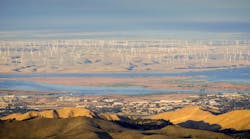According to the County of Fairfax Virginia, drainage is "a network of structures, channels and underground pipes that carry stormwater (rainwater) to ponds, lakes, streams and rivers."
This encompasses both public and private systems and storm drainage is not part of wastewater systems.
How does Drainage Work?
According to the City of Everett, Washington, “storm drains collect water and move it downstream. Grates cluttered with leaves, garbage and other debris block flow and create flooding."
The United States Department of Agriculture (USDA) Natural Resources Conservation Service states that "drainage water management is the process of managing water discharges from surface and/or subsurface agricultural drainage systems with water-control structures."
Why is Drainage Important?
The County of Fairfax Virginia states that that drainage controls the "quantity, quality, timing and distribution of storm runoff."
When excessive overflow is not properly drained, there is a chance for property damage, which is costly in most cases.
Also noted is that some issues drains can face include when the storm drains become blocked by debris, which can block a rainwater channel and then cause a backup that leads to flooding the areas behind it.
According to Penn State Extension, it is vital that storm drains are not used as ditches or waste receptacles since they are direct paths to local creeks and rivers.
What are the Different Types of Stormwater Drainage Systems?
The USDA highlights drainage water management as a crucial component of drainage. Drainage water management as defined by the USDA is "the process of managing the timing and the amount of water discharged from agricultural drainage systems. DWM is based on the premise that the same drainage intensity is not required at all times during the year."
With this in mind, there are several types of stormwater drainage systems, which according to Slot Drain Systems, include:
- Ditches and swales, which can help reduce the flooding, soil erosion and pollution caused by stormwater runoff. Both feature wide, open channels.
- Dams, which are man-made barriers that can control and store stormwater runoff.
- Catch basins, which consist of a surface grate that can be connected to a perforated tank, allowing stormwater to percolate, and then be collected in the sump while the sediment settles on the bottom, while clean water flows through pipes.
- Curb cuts and sidewalk under drains, which are found virtually everywhere and collect stormwater runoff from roadways to redirect it to swales or another discharge point.
- Slot drains, which come with a slim opening that prevents debris and large sediment from clogging the drain without minimizing flow rate.
Drainage systems can also be broken up into four categories: surface drainage systems, subsurface drainage systems, slope drainage systems and downspouts and gutter systems.
Surface drainage systems remove excess water from the land’s surface, while subsurface drainage systems are implemented beneath the top layer of soil. Slope drainage systems ensure water flows in a downward direction, while downspouts and gutter systems are referred to as “a structure’s first defense against over-saturation from stormwater.”


